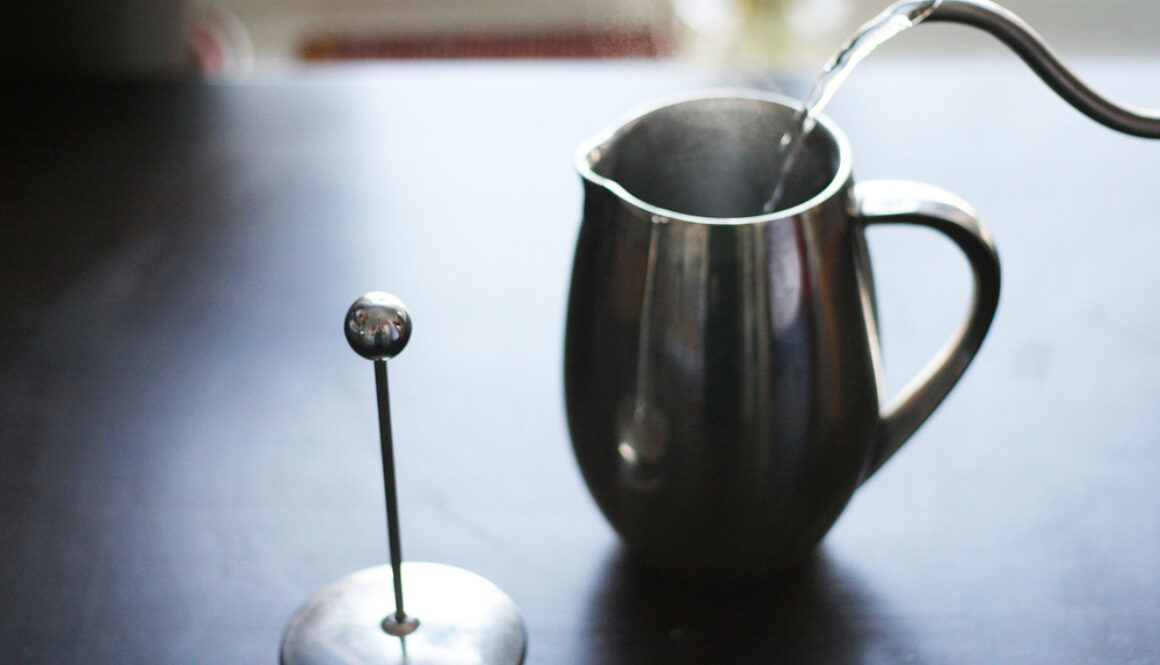How to drink coffee in September
I made this informative Venn diagram in honor of National Coffee Day. Isn’t Fall weather just like that? Hot one minute, cold the next.

I made this informative Venn diagram in honor of National Coffee Day. Isn’t Fall weather just like that? Hot one minute, cold the next.



Before I became a barista, this is a question I would ask myself every time I tried to make coffee. Most coffee machines or even manual brew methods give you a rough guideline like “3 TBSPs per cup” — but the definition of “cup” varied by preparation, and how should I know if it should be a level TSBP or heaping? Knowing how much raw coffee material to use to get that perfect cup was a constant challenge.
Then, I went to coffee school. As it turns out, coffee is a little bit more science than art. In our classes, we learned the coffee industry has standards for brewed coffee based on research into the preferences of real people – study participants were served coffee brewed to different specifications and recorded their tastes, ending up with a range of acceptable brews that guide the industry to this day.
Key to this brew range is the ratio of coffee to water. Use too much water, and you could end up with a weak and, ahem, watery cup; too little and you’ll get closer to coffee sludge. While the extremes are fairly obvious, it’s in the nuanced close-to-perfect range that brewing gets a little trickier. In our classes, we learned the range for most peoples’ taste lies in the ratio of 1 oz water to 1.5-1.75 grams of coffee. That means if you use 8 ounces of water in your brew method, you should plan to grind between 12 and 14 grams of coffee. Some people like their coffee a little stronger or weaker and will vary on either side of the range, but this is a helpful starting point.
Using this range as a reference, the next (possibly obvious) piece is weighing and measuring your ingredients. Use a regular kitchen scale to weigh out your coffee before brewing, then break it out again when you add the water to make sure you hit your ratio. Keeping variables like this constant allows you to play around with grind size and brew time to find the cup that suits your tastes. In my recipe for French press, I use 1.75 grams of coffee per ounce of water – for my 18oz press, that’s 31 grams of coffee (freshly ground on a coarse setting). For Aeropress, I go a little lighter, using 13.6 grams of coffee for 8oz water.

And in case this is all sounding like a little too much work for your everyday cup of joe (or you don’t have access to a scale), keep in mind that you could always set your ratio once – measuring how many scoops equals 31 grams – and leave the scale on the shelf next time. For reference, I just weighed out a level tablespoon of my beans at 8 grams – if that helps!
Finding the ratio that works for you, combined with the right grind size and brew time, will ensure you get a great cup every time.
What’s your recipe for a perfect cup?

Photo via Box Kite NYC
I’m a big believer that no market can ever really be truly saturated. No matter how many businesses are stuffed in the sardine can of your industry, if you can do it better, cheaper, or with greater distinction, the market will make room for you. Whether you’re making iPhone games, baby shoes or craft beer, the market rewards excellence.
New York City seems to me like one of those places we expect to be fully saturated, but new and interesting things keep popping up – and staying popped. This week I stopped into a newcomer on the New York specialty coffee scene, Box Kite in the East Village. A beautiful, minimalist space with white walls and dark wood, Box Kite is immediately comfortable. Guests can choose to sit at the bar or the few seats by the window, and the staff are welcoming and casual. Coffee offerings are scrawled on a butcher paper roll installed in the near wall – one choice each for straight espresso, pourover, or drip. When I visited, a MADCAP Ethiopian could be ordered as espresso or drip, with a third Ethiopian from Heart Roasters on pourover.
Given its size and seating arrangement, the cafe is best-suited for pairs or solo travelers. Sitting in the middle of the bar and sipping espresso served with a cookie and sparkling water, I had a curiosity-satisfying view of the chefs at work and could chat with the barista about the coffees. The cafe is open late, making it one of the few places in the city to get exceptional after-dinner coffee, and it’s truly a great place to do so.
I’m happy to see there’s still room for more of the good stuff even in a city as crowded as New York. I’ll be keeping my eye on Box Kite and thinking good thoughts their way to stay in business.
Check it out! My first instagram video, and a bonafide Aeropress recipe. Get your morning coffee on!
https://www.instagram.com/p/i1Ot4fTFbo